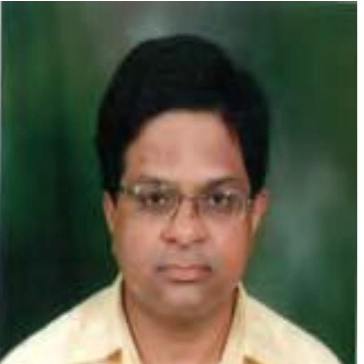International Journal of Image, Graphics and Signal Processing (IJIGSP)
IJIGSP Vol. 6, No. 1, 8 Nov. 2013
Cover page and Table of Contents: PDF (size: 741KB)
An Effective Age Classification Using Topological Features Based on Compressed and Reduced Grey Level Model of The Facial Skin
Full Text (PDF, 741KB), PP.9-17
Views: 0 Downloads: 0
Author(s)
Index Terms
Topology, texture features, bone structure, geometrical changes, compressed model, grey value reduction
Abstract
The present paper proposes an innovative technique that classifies human age group in to five categories i.e 0 to 12, 13 to 25, 26 to 45, 46 to 60, and above 60 based on the Topological Texture Features (TTF) of the facial skin. Most of the existing age classification problems in the literature usually derive various facial features on entire image and with large range of gray level values in order to achieve efficient and precise classification and recognition. This leads to lot of complexity in evaluating feature parameters. To address this, the present paper derives TTF’s on Second Order image Compressed and Fuzzy Reduced Grey level (SICFRG) model, which reduces the image dimension from 5 x 5 into 2 x 2 and grey level range without any loss of significant feature information. The present paper assumes that bone structural changes do not occur after the person is fully grown that is the geometric relationships of primary features do not vary. That is the reason secondary features i.e TTF’s are identified and exploited. In the literature few researchers worked on TTF for classification of age, but so far no research is implemented on reduced dimensionality model. The proposed Second order Image Compressed and Fuzzy Reduced Grey level (SICFRG) model reduces overall complexity in recognizing and finding histogram of the TTF on the facial skin. The experimental evidence on FG-NET aging database and Google Images clearly indicates the high classification rate of the proposed method.
Cite This Paper
V. Vijaya Kumar, Jangala. Sasi Kiran, V.V. Hari Chandana,"An Effective Age Classification Using Topological Features Based on Compressed and Reduced Grey Level Model of The Facial Skin", IJIGSP, vol.6, no.1, pp.9-17, 2014. DOI: 10.5815/ijigsp.2014.01.02
Reference
[1]Chellappa, R., Wilson, C.L. and Sirohey, S., “ Human and machine recognition of faces: A survey, “ proc. of the IEEE, vol.83, pp. 705-740 (1995).
[2]Choi, C., “Age change for predicting future faces”, proc. IEEE Int. Conf. on fuzzy systems, vol 3, pp. 1603-1608 (1999).
[3]A. Lanitis, C. Draganova, and C. Christodoulou. Comparing different classifiers for automatic age estimation. IEEE Transactions on Systems, Man, and Cybernetics, Part B, 34(l):621-628, February 2004.
[4]Y. H. Kwon and N. V. Lobo,”Age classification from facial images,” Computer Vision and Image Understanding, vol.74, no.1 pp.1-21, 1999.
[5]B. Pittenger and R. E. Shaw. Aging faces as viscal-elastic events: Implications for a theory of nonrigid shape perception. Journal of Experimental Psychology: Human Perception and Performance, 1(4):374-382 1975.
[6]J. B. Pittenger, R. E. Shaw, and L. S. Mark. Perceptual information for the age level of faces as a higher order invariant of growth. Jourtal of Experimental Psychology: Hufman Perception and Per-finance, 5(3):478-493, 1979.
[7]L. S. Mark and J. T. Todd. The perception of growth in three dimensions. Jourrial ofPerception and Psychophysics, 33(2):193-196, 1983.
[8]L. S. Mark, J. B. Pittenger, H. Hines, C. Carello, R. E. Shaw, and J. T. Todd. “Wrinkling and head shape as coordinated sources of age level information”, Journal of Perception and Psychophysics, 27(2):1L17-124, 1980.
[9]D. Burt and D. Perrett. Perception of age in adult caucasian male faces: computer graphic manipulation of shape and colour information. Proceedings of the Royal Society ofLondon B, B-259:137-143, 1995.
[10]Kwon, Y. H. and da Vitoria Lobo, N., “Age classification from facial images,” Proc. IEEE Conf. on Computer Vision and Pattern Recognition, Seattle, Washington, U. S. A., pp. 762-767 (1994).
[11]Y Wu, N. Thalmaun, and D. Thalimnann. A dynaimnic wrinkle model in facial animation and skin aging. Journal of Visualization and Computer Animation, 6:195-205, 1995.
[12]A. Lanitis, C. Draganova, and C. Christodoulou. Comparing different classifiers for automatic age estimation. IEEE Transactions on Systems, Man, and Cybernetics, Part B, 34(l):621-628, February 2004.
[13]A. Lanitis, C. Taylor, and T. Cootes. Toward automatic simulation of aging effects on face images. IEEE Tran.sactions on Pattern Analysis and Machine Intelligence, 24(4):442-455, April 2002.
[14]N. Ramanathan and R. Chellappa. Face verification across age progression. IEEE Transactions on lmage Processing, 15(11L):3349- 3361, November 2006.
[15]C. Scandrett, C. Solomon, and S. Gibson. A personspecific, rigorous aging model of the human face. Prttern Recogtnioti Letters, 27(15):1776-1787B November 2006.
[16]J. Suo, F. Min, S. Zhu, S. Shan, and X. Chen. A multiresolution dynamic model for face aging simulation. In IEEE Conference of Computer Vision and Pattern Recognition, pages 1-8B 2007.
[17]X. Geng, Z. Zhou, and K. Smith-Miles. Automatic age estimation based on facial aging patterns. IEEE Transactions on Pattern Analysis and Machine Ititelligence, 29(12):2234-2240, December 2007.
[18]N. Ramanathan and R. Chellappa. Modeling age progression in young faces. In Proceedings of IEEE International Con/conference on Computer Vision and Porttern Recognition, pages 387-394, 2006.
[19]Kwon, Y. H. and da Vitoria Lobo, N., “Age classification from facial images,” Proc. IEEE Conf. on Computer Vision and Pattern Recognition, Seattle, Washington, U. S. A., pp. 762-767 (1994).
[20]F. Yun, X. Ye and T. S. Huang, "Estimating Human Age by Manifold Analysis of Face Pictures and Regression on Aging Features," in Proc. of 2007 IEEE International Conference on Multimedia and Expo, 2007, pp. 1383-1386.
[21]Wen-Bing Horng, Cheng-Ping Lee and Chun-Wen Chen “Classification of Age Groups Based on Facial Features”, Tamkang Journal of Science and Engineering, Vol. 4, No. 3, pp. 183-192 (2001).
[22]N. Ramanathan and R. Chellappa. Face verification across age progression. In IEEE Conference on Computer Vision and Pattern Recognition, volume 2, pages 462–469, San Diego, U.S.A, 2005.
[23]T. Ahonen, A. Hadid, M. Pietikainen, “Face Description with Local Binary Patterns: Application to Face Recognition”, IEEE Trans. Pattern Anal. Mach. Intell., vol. 28, no. 12, pp. 2037 –2041, 2006.
[24]B.Sujatha, Dr.V.Vijaya Kumar, M.Rama Bai “Morphological Primitive Patterns with Grain Components on LDP for Child and Adult Age Classification” in International Journal of Computer Applications (0975 – 8887) Volume 21– No.3, pp. 50-55, May 2011.
[25]Todd J. T., Mark L. S., Shaw R. E. and Pittenger J. B. “The perception of human growth,” Scientific American, 242(2):132–144, 1980.
[26]Kwon Y. H. and da Vitoria Lobo N. “Age classification from facial images,” Proc. IEEE Conf. on Computer Visionand Pattern Recognition, Seattle, Washington, U. S. A., pp. 762-767 (1994).
[27]Hasegawa H. and Simizu E. “Discrimination of facial age generation using neural networks,” T.IEE Japan, vol.117-C, no.12, pp.1897–1898, 1997.
[28]Kosugi M. “Human-face recognition using mosaic pattern and neural networks,” IEICE Trans., vol.J76-D-II, no.6, pp.1132–1139, June 1993.
[29]Chandra Mohan M., Vijaya Kumar V. and Damodaram A. ”Novel Method of Adulthood Classification based on Geometrical Features of Face,” Accepted by GVIP Journal of Graphics, Vision and Image Processing, to publish in June, 2010 issue.
[30]Sirovich L. and Kirby M. “Low-dimensional procedure for the characterization of human face,” J. Opt. Am. A, vol.7, no.3, pp.519–524, 1987.
[31]Chandra Mohan M., Vijaya Kumar V. and Venkata Krishna V. ”Novel Method of Adult Age Classification Using Linear Wavelet Transforms,” IJCSNS International Journal of Computer Science and Network Security, VOL. 10 No. 3, pp. 61-68, March, 2010.


